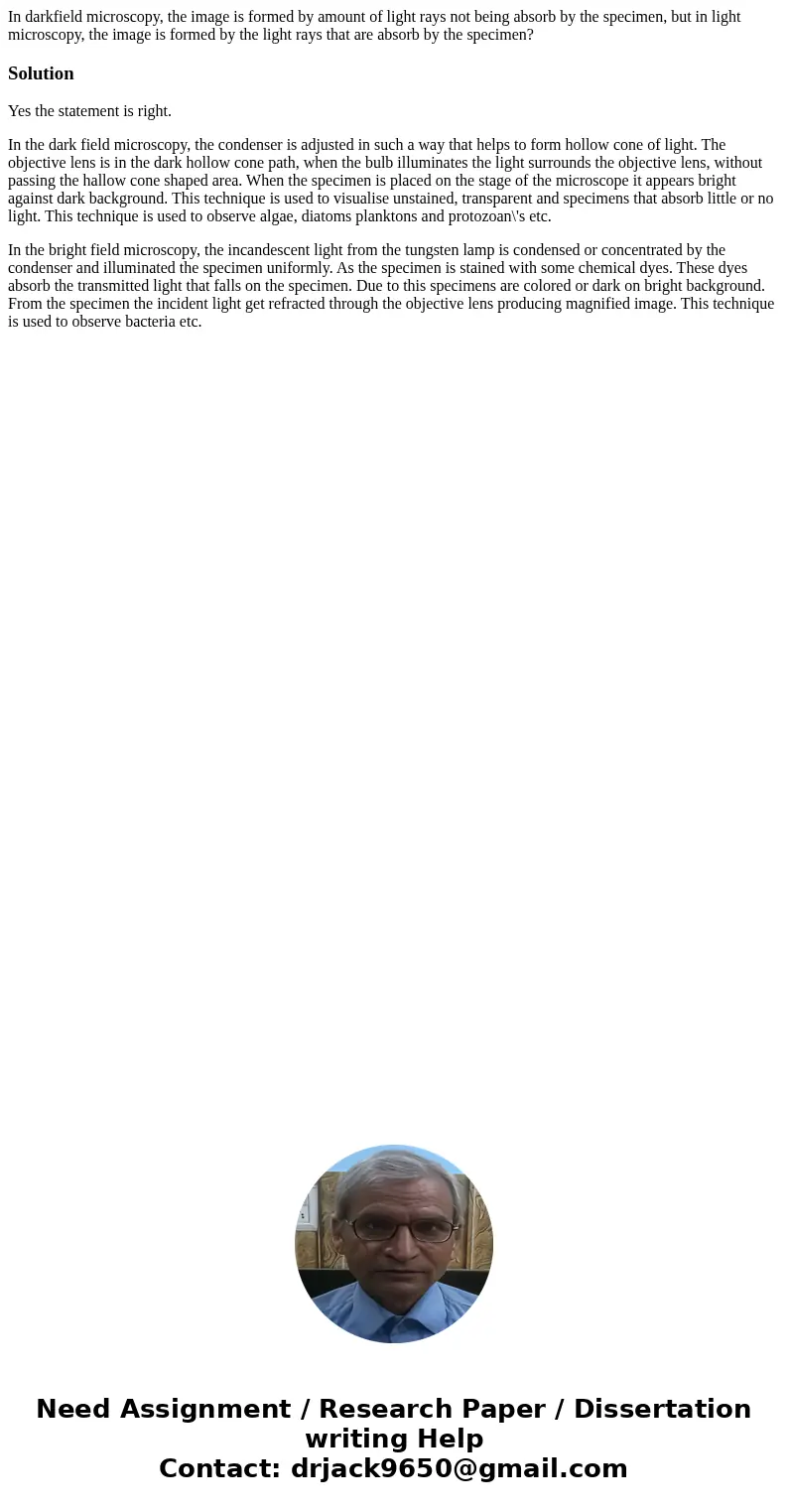In darkfield microscopy the image is formed by amount of lig
In darkfield microscopy, the image is formed by amount of light rays not being absorb by the specimen, but in light microscopy, the image is formed by the light rays that are absorb by the specimen?
Solution
Yes the statement is right.
In the dark field microscopy, the condenser is adjusted in such a way that helps to form hollow cone of light. The objective lens is in the dark hollow cone path, when the bulb illuminates the light surrounds the objective lens, without passing the hallow cone shaped area. When the specimen is placed on the stage of the microscope it appears bright against dark background. This technique is used to visualise unstained, transparent and specimens that absorb little or no light. This technique is used to observe algae, diatoms planktons and protozoan\'s etc.
In the bright field microscopy, the incandescent light from the tungsten lamp is condensed or concentrated by the condenser and illuminated the specimen uniformly. As the specimen is stained with some chemical dyes. These dyes absorb the transmitted light that falls on the specimen. Due to this specimens are colored or dark on bright background. From the specimen the incident light get refracted through the objective lens producing magnified image. This technique is used to observe bacteria etc.

 Homework Sourse
Homework Sourse